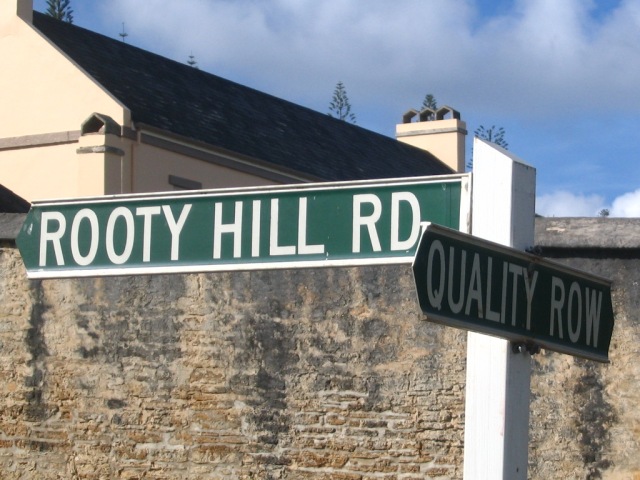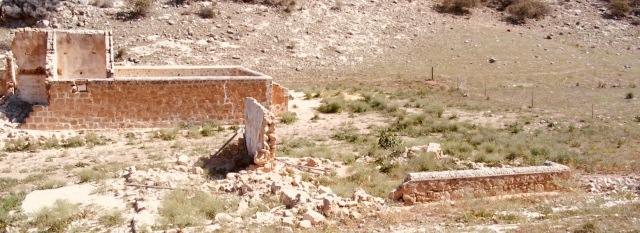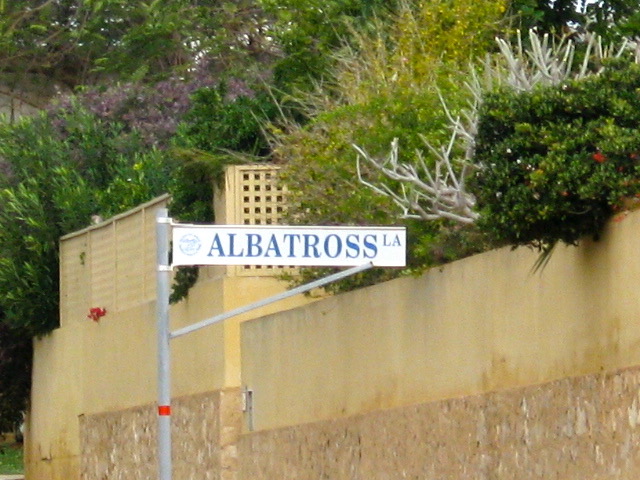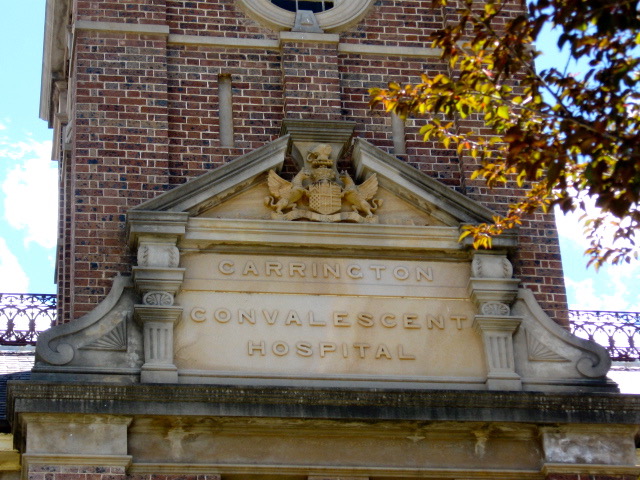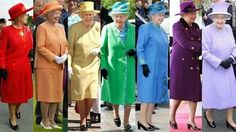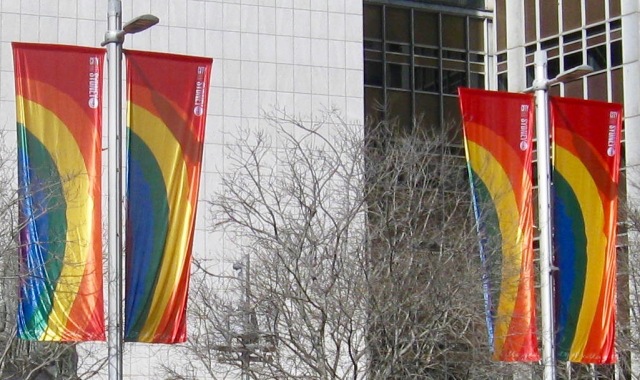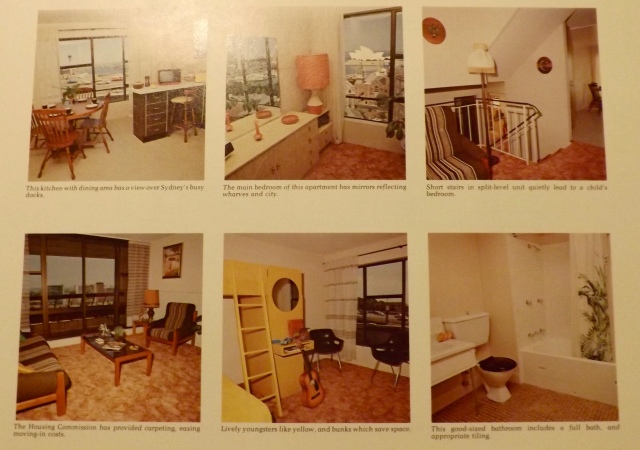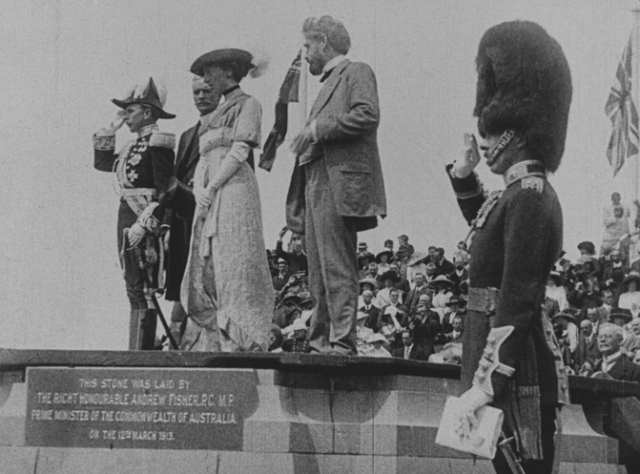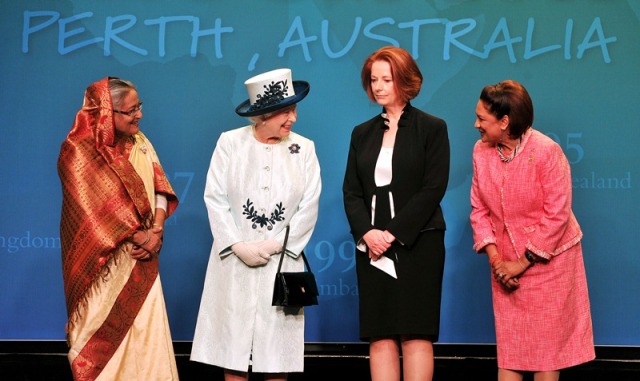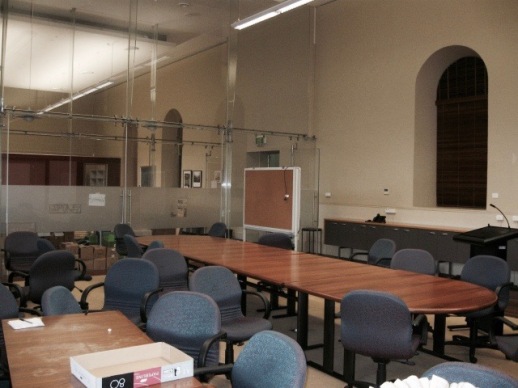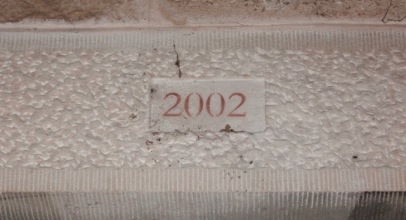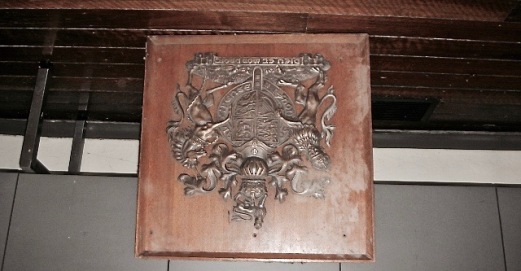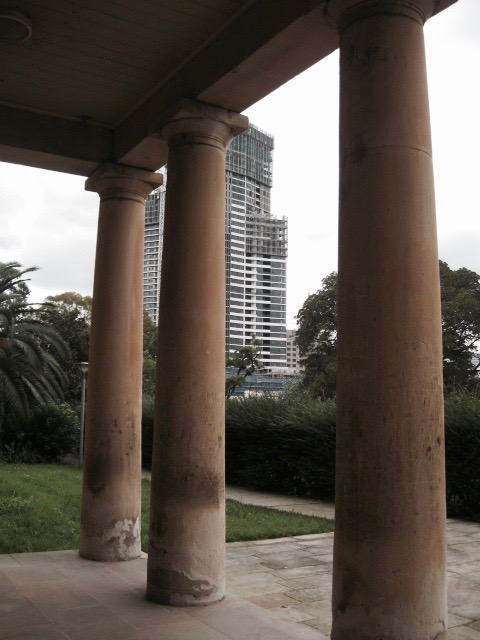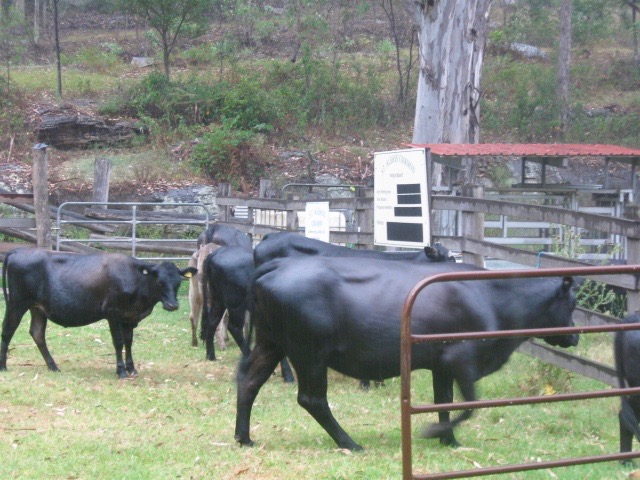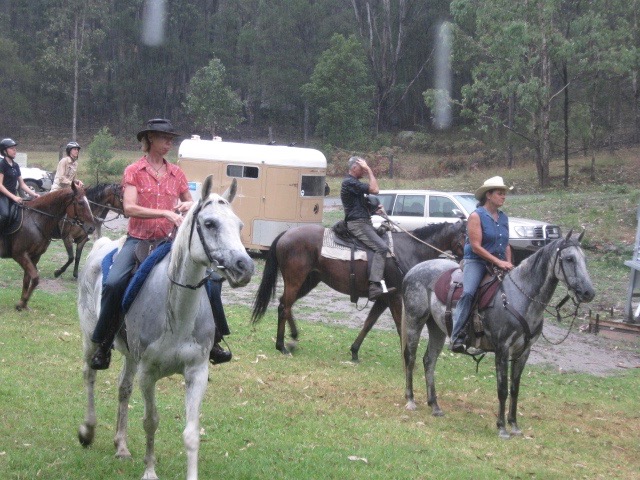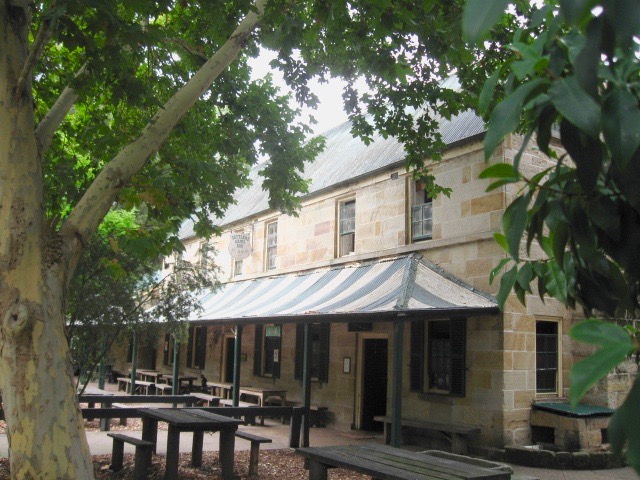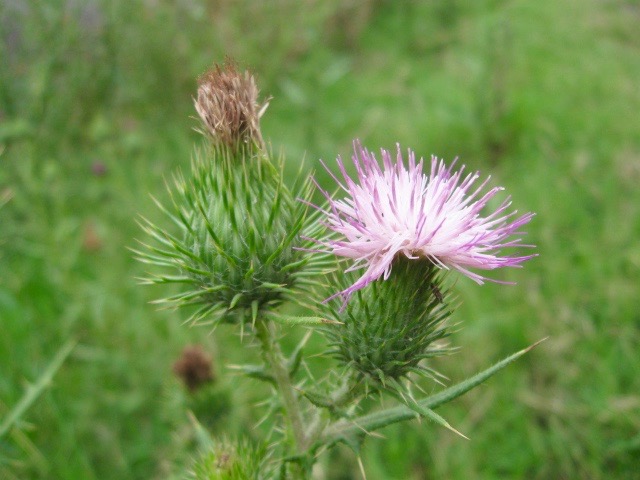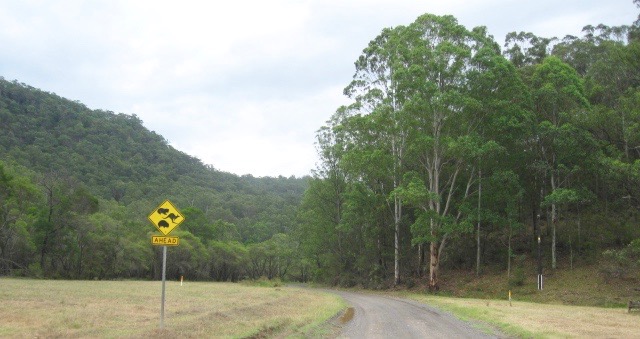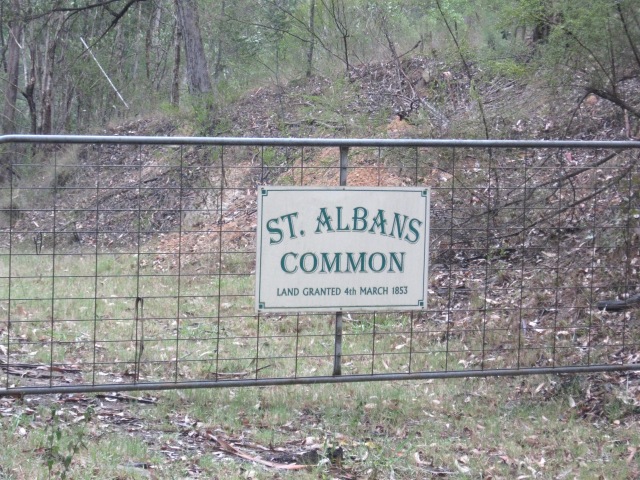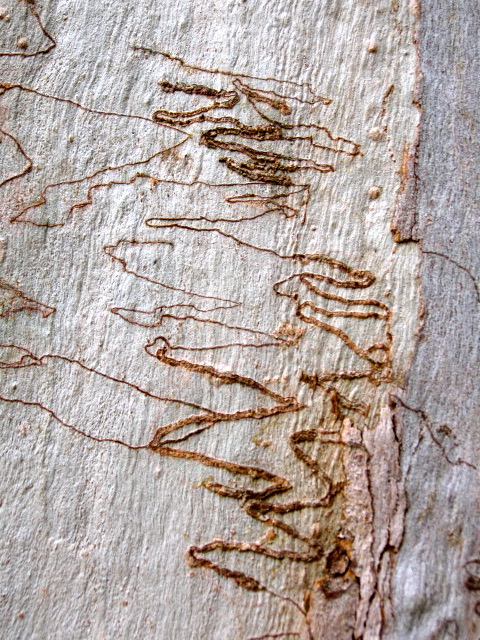
Much Writing, Many Opinions, Not a lot of History. Bark of the Scribbly Gum (Eucalyptus sclerophylla), Blue Mountains, New South Wales. Image Mohamed Mokak
I have been reading and watching and hearing the debate/conflict around Australia Day over the past few weeks, and past few years. There are many views and opinions, so instead of writing history with footnotes this post is just another opinion, another view, to add to the – I’d like to say conversation, but that seems too genteel a word for much of what I observe. I choose opinion rather than history because, while ‘history’ is claimed by many, few seem able to distinguish history from polemic. After recently reading that Irish people fleeing the potato famine resisted being transported to Sydney in 1788 on the First Fleet … I gave up in despair.
First, disaggregate
My first point is to disaggregate the date (26th January) and the celebration (Australia Day), and have a look at each in turn.
26th January is the anniversary of a distinct historical event, the landing of the First Fleet in Sydney Cove. This was an event that has had huge and continuing consequences for the continent, and the peoples who chose to live here, and the societies around us in the South Pacific and South East Asia. These consequences don’t begin and end at the high-water mark. They are not contained by 21st century borders. 26th January was commemorated before 1808 as the Day of Landing, recalling journeys rather than boundaries.
The consequences for the Indigenous countries and peoples of this continent cannot be ignored or obscured. Invasion, colonisation, dispossession. These are traumas that last for generations, and affect both the colonised and the colonisers, and all their descendants. I am not Indigenous, and can’t presume to speak for Indigenous peoples. But, I think we non-Indigenous people deny ourselves the chance to come to terms with our inheritances if we continue to deny, or choose not to hear, the stories being told by Indigenous peoples about what this date means for them. What is it that we really want to bequeath to coming generations?
I do think the 26th January should continue to be observed as a significant date – but to name it and celebrate it as we do now cannot be sustained.
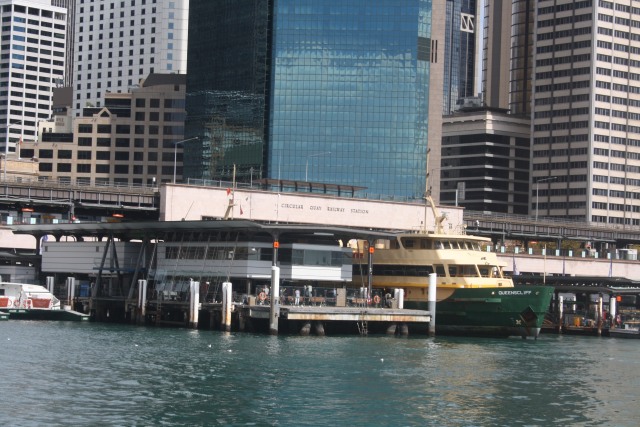
Sydney Cove, where the First Fleet landed in 1788. This nationally significant historic landscape shows, for those who want to see, the true balance between inheritance and mammon. Image mrbbaskerville
Australia Day is a celebration that has had several names and been held on several other dates. I remember it, before the late-80s, as just another long-weekend that heralded the return to school and work after summer holidays. Fireworks, flag-waving, parades, angst –these things were not especially apparent. The coincidence of the date and the name dates from 1935. The sanctification the date and the celebration dates from 1994.
It is instructive to note the contexts for this evolution. The name ‘Australia Day’ arose when preparing for the 1938 sesquicentenary of Australia as part of the Empire. It is an imperial name. The awarding of honours on 26th January dates from the early 1970s and the invention of the Order of Australia. It came as part of the ‘new nationalism’ of that period in the wake of the British government’s abandonment of the Commonwealth in favour of Europe. Until then, New Year’s Day had been perfectly fine for announcing honours. The specific sanctifying of Australia Day by making it a holiday on the precise calendar date of 26th January conflates it with the 1990s republic campaign. We lost a long-weekend (except for calendrical serendipity) in another wave of nationalism.
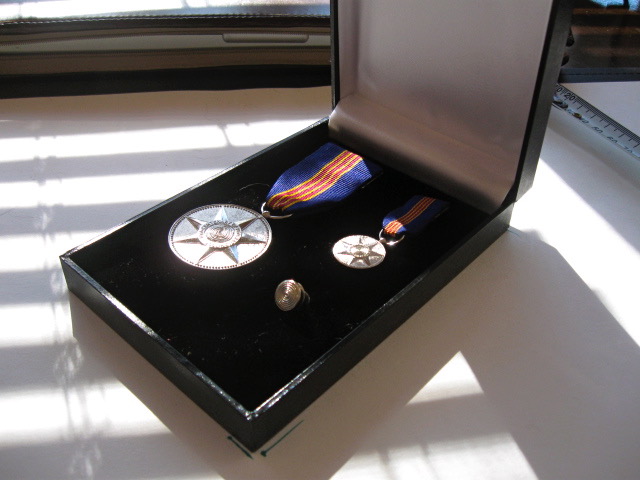
Honours: Centenary of Federation Medal and the ‘crimson thread of kinship’. Image mrbbaskerville
These decisions were all made ‘inside the bubble’ of the political classes, not by us. As this genealogy shows, ‘Australia Day’ is really a relatively recent phenomenon, an accumulation of events and decisions, driven by imperialism, then abandonment, then nationalism. With each new political imperative an attempt was made to anchor it to a definitive ‘historical’ date, to add some lustre of ‘authenticity’, to put it beyond questioning and present ‘Australia Day’ as an old and enduring thing. Each change was driven by a crumbling of previous political and ideological frameworks, and the current questioning can be understood as simply the next chapter in what is the actual ‘old story’.
Is disagreement really a problem anyway?
An argument often advanced is that Australia Day is for partying and having a jolly time without any whingers ‘spoiling things’. ‘Be happy’, we’re exhorted (with the implication ‘and don’t be traitorous’). But is there really a problem with debating (as distinct from crudely celebrating) the meaning of Australia Day on 26th January? The argument does raise consciousness of the impacts of 1788, especially for non-Aboriginal people. I wonder if that actually makes it more meaningful in some perverse way, just as republicans invariably rise to their soap boxes on the Queen’s Birthday holiday. No other public holidays seem to attract any debate or discussion, and tend to pass quietly over a somnolent long-weekend. Perhaps these are the two events that have truly deep resonances for Australians and their multiple identities, while all the others are just days-off?
Some suggestions have been made to change the date of Australia Day to that on which Australia becomes a republic (rarely ‘if’, always confidently ‘when’ in this rhetoric), or to replace the Queen’s Birthday holiday with this ‘national’ holiday. Rarely is a voice raised that this is treason-talk, or that it should be silenced. Advocates say that either change will be uncontentious and will be unifying. Frankly, I think this is self-delusional. Not contentious? To quote a well-known fictional character, “Tell ‘em they’re dreamin’”. But, being able to have that discussion is healthy and tends to confirm rather than diminish the royal holiday’s significance – because we actually talk about it rather than slumber.

To build something new from the ruins of the old means talking with each other, exploring the shades of grey. Ruins of Maley’s Mill, Greenough, Western Australia after the fire of 2013. Image LBaskerville.
Marking the seasons
Why do we have public holidays anyway? I’m guessing they originate in rituals to mark the passing or turning of the seasons, for reasons both pragmatic and spiritual.
We already have some of these. Perhaps the most relevant is Melbourne Cup Day, which informally marks the beginning of the summer holiday season. 26th January has been its bookend, marking the end of summer, whatever called. A holiday at the end of summer has a pragmatic purpose as a marker, and a ritual purpose as a farewell to the holidays and returning to work. The political overlaying of Australia Day since the 1930s has tended to obscure this informal seasonal purpose.
Another seasonal date, sometimes a holiday, is 1st September which marks the end of winter and beginning of spring. It is known as Wattle Day or, in the earlier 20th century, as Australia Day. It iss about rebirth, or re-emergence after winter, and the blooming of the national flower, the wattle (or specifically, the Golden Wattle). Golden Wattle blossom ornaments the Commonwealth Coat of Arms (since 1912), provides the decorative forms for the insignia of the Order of Australia (since 1976), and its green and gold foliage provides the national sporting colours (since 1988).
Clearly, there is some coincidence of dates with the serial ordering of Australia Day referred to before, but the difference is that 1st September, like Melbourne Cup Day, is a date without any notable political significance. That is a strength.

Sandhills or summer-scented wattle (Acacia rostellifera), Bootenal Spring, Western Australia. This species flowers from July to December, and it is said that there is always a wattle species flowering somewhere across the continent at any time of the year.
Image mrbbaskerville
Do we even need a ‘national’ day?
While some countries have a national day that lacks contention, I’m not really sure such a thing is possible in a settler society. It may be better to try and turn that contention towards creating change rather than trying to silence it in favour of some illusory neutral ‘fun’ celebration of beer, bbqs and beaches sans angry words.
Many countries manage to have a national holiday without the name of the country in it. Think Bastille Day, Independence Day, Flag Day, Accession Day, a patron saint’s day, a sovereign’s birthday, Statehood Day, Longest Day of the Year, Liberation Day. Some relate to ‘nation-building’ events, but not all. Perhaps, whatever the date, even retaining the name Australia Day needs to be considered.
Another consequence of this debate that has rarely been mentioned but which, logically, must arise at some point, is the ‘State days’, by which I mean those dates on which the various state and territories celebrate their own ‘national’ day. Those which mark the commencement of colonisation are WA Day, formerly Foundation Day, in Western Australia (first Monday in June), and Proclamation Day in South Australia (28 December). Canberra Day (second Monday in March), Queensland Day, formerly Separation Day (6 June), Territory Day in the Northern Territory (1 July) and Foundation Day on Norfolk Island (6 March) are similar. With such State Days available, is a single homogenous national day essential in a country with multiple beginnings?

A land of many flags, many stories. Image mrbbaskerville
Where to next?
A common theme in the opinion writing about Australia Day has been an unwillingness to name an alternate date, or a demand that someone name another date. The term ‘Australia Day’ hasn’t been questioned so much, although I’m not sure there’s any compelling reason to preserve it. Perhaps it too has ‘had its day’, so to speak, and another name without the historical baggage may be better.
This are my suggestions for replacing an Australia Day celebrated on 26th January.
26th January should be retained as a significant day, devoted to reflection and contemplation, atonement and redemption, in a secular or civic space. Colonisation commenced on that date, and we need to face this and its consequences. I think the original name for this date, the Day of Landing, is both historically descriptive and sufficiently ambiguous to provoke people to think about what happened, about consequences and about futures. It should be a day with similar sensibilities as Anzac Day.
A seasonal holiday is still needed to mark the end of summer, and I think we could create a new Summer’s End Long Weekend in the first weekend of February. This would celebrate the end of summer and return to ‘ordinary’ time, and is deliberately lacking in any political or nationalistic symbolism. A celebratory Summer’s End first weekend in February would provide a sensitive gap after the atoning Day of Landing. It would re-establish this holiday in its traditional ‘long-weekend’ form. The ‘modern’ Australia Day Honours could be returned to New Year’s Day Honours, reinstating an actual tradition for honours.

Summer’s End, in The Rocks where invasion and colonisation began in 1788. Image mrbbaskerville
If we really need to have a specific national day, then at this stage 1st September is my suggestion, named either as Australia Day or preferably Golden Wattle Day. This would enable some element of traditionalism to be included in the day, as it has a history as an informal national day, and it could celebrate the date of which the Golden Wattle was formally adopted as the national floral emblem on 1 September 1988. It would also have the seasonal, celebratory neutrality of Summer’s End.
Finally, if we should have a national day with cultural and political resonances, then I think that can only really come in the future when a treaty or treaties have been made between Indigenous and non-Indigenous Australia. We must address the fundamental issue, the original sin, at the heart of our commopnwealth, to properly hear and listen and respond to that “whispering in the bottom of our hearts” described by Richard Windeyer in 1844. The circle can never otherwise be closed.
I find inspiration in the words of the Uluru Statement from the Heart of 25 May 2017, especially in these two passages that intersect place and time:
This sovereignty is a spiritual notion, the ancestral tie between the land, or mother nature, and the Aboriginal and Torres Strait Islander peoples who were born therefrom … it has never been ceded or extinguished, and co-exists with the sovereignty of the Crown. How could it be otherwise?
This our ancestors did,
according to the reckoning of our culture, from the Creation;
according to the common law, from time immemorial; and
according to science, for more than 60,000 years.
Creation, common law, spirit, co-existence – how, indeed, can it be otherwise? And yet this is what was so flippantly dismissed by our republican prime minister, avid defender of Australia Day 26th January. Now, I suspect, it will be time for him to reap the whirlwind.
Treaty Day, or Uluru Day, on 25th May, would be an honourable day and date for which we can all strive.



